My holiday in North Korea – what I learned in the world's most secretive state
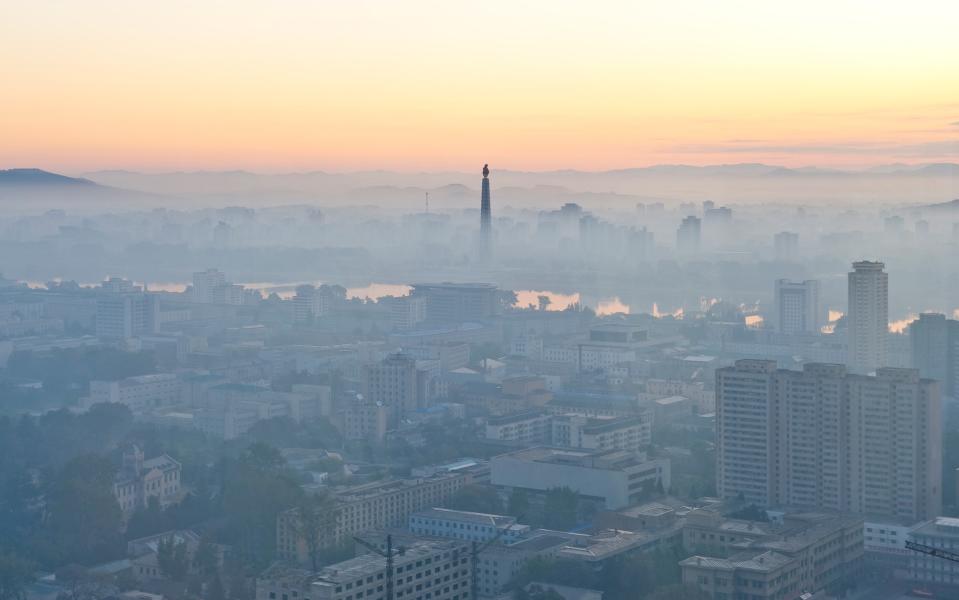
I stood in the heart of the demilitarised zone between the Democratic People’s Republic of Korea (DPRK) and South Korea on a sunny April morning. Within a week, Kim Jong-un would walk past these bright blue huts to the frontier, while Moon Jae-in, his counterpart, approached from the southern side. The two men shook hands on the frontier and retired for what were billed as historic talks.
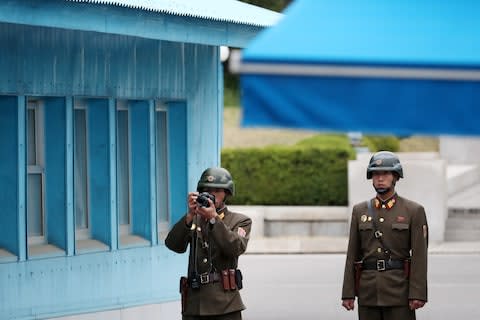
The world applauded the first crack in the ice between the two nations in February when Kim’s sister attended the opening of the Winter Olympics in Pyeongchang and players from both countries formed a joint Korean ice hockey team. The DPRK paused nuclear testing. This week saw an even greater historic moment when the on-off meeting between Kim and Donald Trump finally went ahead – and both men emerged smiling. The US president even commented on the fact North Korea has “great beaches”.

Whether the bonhomie and warm handshakes in Singapore will translate into more visitors to North Korea – and a relaxation of the rigid rules governing such visits – remains to be seen. Having recently visited the country they could do with a little relaxing.

What an extraordinary, but very isolated country it is. And how it goes out of its way to ensure that tourists who do go are themselves isolated and barred from making meaningful contact with North Koreans. It is hardly surprising that the country has to date not featured highly on most people’s travel plans. The Foreign Office advises against all but essential travel. If the Singappore smiles turn into something deeper, things may change, but at the moment Britons who want to go to North Korea can only do so as part of a highly organised tour. Which is what I did.
It was eerie from the off. Pyongyang International Airport is immaculate but Koryo Air’s veteran jet from Beijing stood alone on the Tarmac. We’d been warned about searches and delays at the airport, but unsmiling officers dealt swiftly with minimal paperwork, while customs officials showed no interest in scanning tablets for banned photos of South Korea. Strangely my half-completed crossword was confiscated.
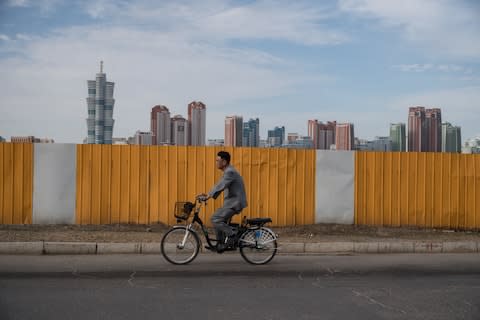
The Saturday evening drive into the city centre was equally eerie. Few cars, no pedestrians, a cheery high-rise skyline in gelati colours: pink, pistachio and lemon. Monuments and apartment blocks postdate the Korean War (1950-53), essential rebuilding after the United States dropped 300,000 bombs, one for every citizen, on Pyongyang. Or so our guide informed us, without mentioning that Kim Il-sung, Kim Jong-un’s grandfather, started it by invading South Korea.
When the ferocious hostilities ended in a stalemate that left the border roughly where it was drawn in 1945, Kim Il-sung ruled a country with an understandable terror of American nuclear capability for 46 years until his death in 1994. His austere militaristic regime, based on his juche ideology of self-reliance and unification of the peninsula, was demonised abroad, but he was venerated at home.
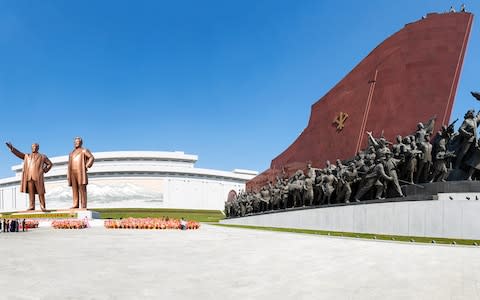
As he and his son, Kim Jong-il (Supreme Leader from 1994 to 2011), are the only permitted publicity, many walls feature larger than life pictures of the happy couple. The favourite is the father in “all this will be yours, my son” mode, as he stretches an arm towards snowcapped mountains. “Make sure you get all of both leaders in your pictures,” the guides insisted, the prelude to photo mandates: no military, no workers. “Koreans only like to be photographed wearing their best clothes.”
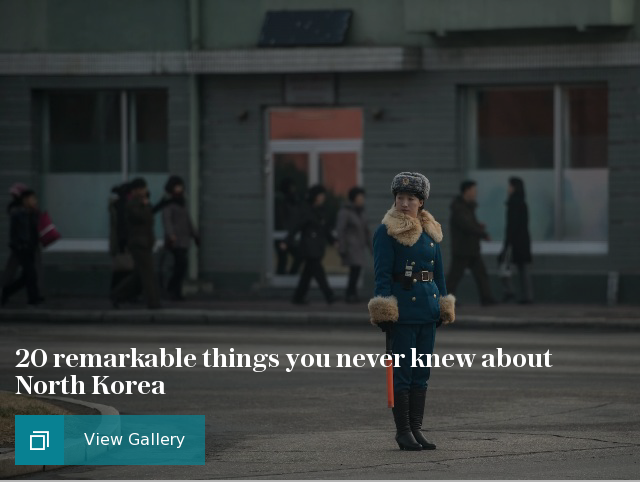
On our 10-night tour, our three English speaking guides, the enforcer, the cheerleader and the persuader, showed us a good time while keeping on message. They took the lead in the open mic sessions on the bus that became our daytime home. They sung Korean folk songs with gusto but took even more pleasure in telling jokes against Americans and the Japanese, their former colonial masters.
Our group of 20 aged 23 to 79 included travellers from Europe and Asia, plus Canada, Australia and New Zealand. We got on famously from the moment we met up in British-owned Koryo Tours’ Beijing office for a stern and mandatory pre-tour briefing.
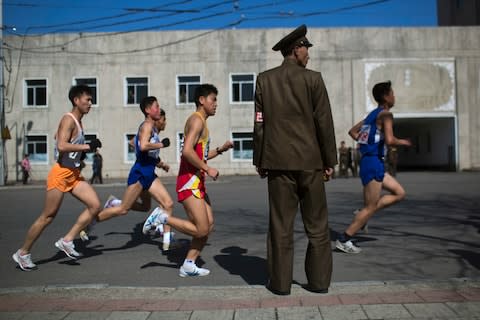
The Yanggakdo Hotel is on an island, the better to keep us corralled. We were not encouraged to leave the building without a guide, even to run around the grounds. Most visitors wouldn’t want to, but we were here for the Pyongyang marathon, a high scorer for global trophy hunters, so quite fancied a bit of a leg stretch. Some headed for a snifter in the revolving bar on the 47th floor boasting magnificent views of the city.
The next day – Sunday April 8 – dawned blustery with flurries of snow, but spirits were raised by parading around a 50,000-seat stadium packed with spectators. The 1,200 contestants walked four by four, elite marathon runners followed by full marathon, half marathon, 10km and 5km runners. We stood on the grass for the opening ceremony in whiuch crowds using metal clappers ramped up the applause to Olympian heights.

Among us was Bristolian Nick Butter, who had pledged to run 196 marathons in 196 countries in 550 days in aid of Prostate Cancer UK. Another runner was Richard Dunwoody, the former National Hunt champion jockey turned photographer, in his first marathon in 15 years. Richard was behind the clock two miles out, but put in the kind of steely finish that won two Grand Nationals to dive over the line in 3 hr 59 min 52 sec.
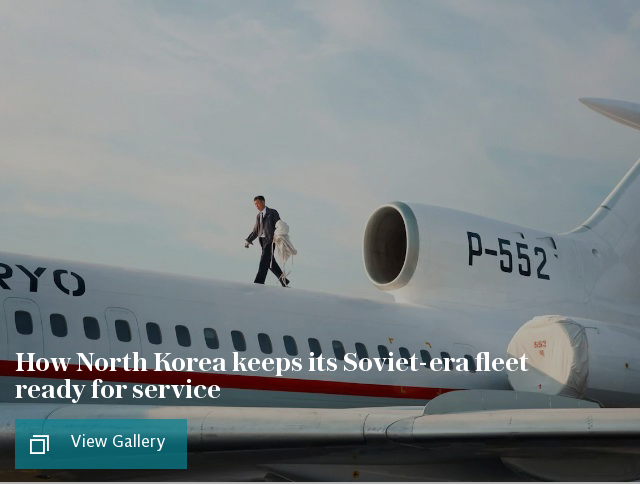
The next morning, we visited bronze Supreme Leaders surveying main squares, bought literature in the foreign book shop and rode the metro – long escalators with publicity-free walls, bucolic mosaics along the platforms, a golden statue of Kim Il-sung to welcome folk aboard the trains. The Victorious Fatherland Liberation War Museum has sheds of American military hardware, a magnificent 360-degree diorama recreating the Battle of Taejon and a tour of USS Pueblo, captured in 1968.
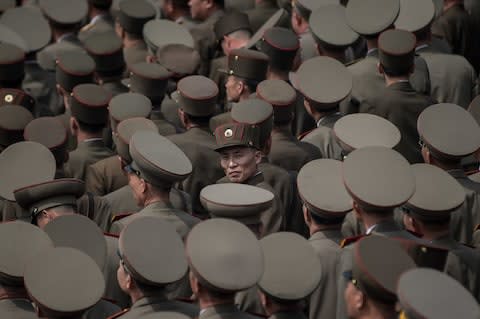
The first of several feasts in Korean International Travel Company (KITC) restaurants was an eye-opener. The room was dominated by a raised wedding table obscured by swagged blooms, the chairs were adorned with pink satin bows, a floral arch invited posing. The food was tasty, with small dishes of roast duck, chicken, fish and vegetables accompanied by beer and kimchi, the spicy cabbage staple of any Korean meal. There were no nuptials on our visit, but the meal became increasingly festive as musicians and dancers drew guests into the action.
The afternoon agenda started with the Mangyongdae Native House, the thatched birthplace of Kim Il-sung, proceeded to the Stalinesque clenched fists of the Party Foundation Monument and finished with a sunset ascent of the symbolic Juche Tower. And so the pattern was set: eight attractions and two banquets a day, with quality bus rest on journeys to the eastern seaboard to overnight in the fishing port of Wonsan and the mountainous Kumgang National Park.
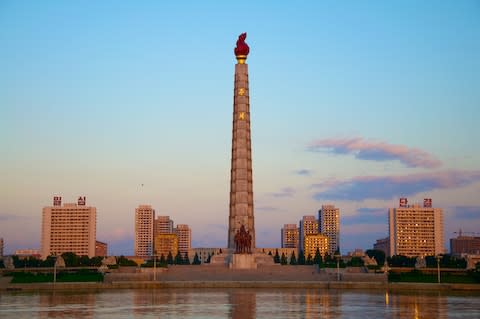
The itinerary was education rich – a primary school, a children’s camp, an agricultural university, a couple of dodgy art galleries – but we got a small sense of local life at the Golden Lane bowling alley and the Maeri shooting range, in the smart Unjong beer bar and at a symphony concert during the Spring Friendship Arts Festival.
Everyone was friendly, the ambience totally non-threatening, but genuine mingling was severely limited. Foreigners can buy souvenirs, postcards, posters and paintings – or bananas and chocolate – in US dollars, euros or Chinese yuan but the only time we could change them into DPRK won was at Kwangbok Supermarket in Pyongyang. Anything we didn’t spend on knock-off Burberry and genuine Stolichnaya vodka had to be changed back at checkout.
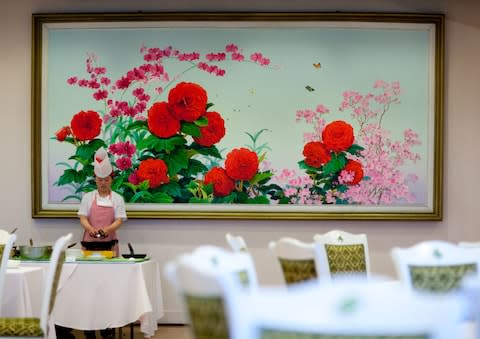
At the Yanggakdo, we could watch Al Jazeera TV and send a $3 (£2.25) email on the hotel account, but citizens have no foreign television, no internet and no right to travel outside their provinces. The fields, seen through the windows of the bus, are ploughed by oxen and harvested by hand. On occasion, we spotted uniformed soldiers digging ditches. Housing allocation ensures that children stay with their parents until they get married. Workers have 15 days holiday a year plus Sundays. What do they do? Go to the cinema or have a picnic in the park.

Or dance, the authorised outlet for a passion for colour and movement that is often frustrated in a repressive dictatorship. For most of their daily duties, Koreans dress soberly, but when the loudspeaker vans set up, they stream into the squares, the men in grey jackets, black trousers and red ties, the women in ankle-length frocks in rainbows of primary colours. Many groups are from universities, their affiliations signalled by 100 identical female haircuts. They stepped proudly to the beat, whirling and circling in complex formations, but laughing uproariously as they insisted passing strangers wreck them by joining in. When the music stopped, they regrouped and filed away: within minutes the squares were empty.
By our second Sunday, the sun and the cherry blossom were out for the annual celebrations of Kim Il-sung’s birthday. I’d assumed a triumphalist parade of military hardware, but we dined elaborately on a river boat while bowing citizens presented flower urns to the gigantic Supreme Leaders on Mansu Hill. This was a good vantage point for fireworks that framed the Juche Tower as it sent out its symbolic message. As we all enjoyed a magical party night, it was easy to imagine how welcome change would be. After this week, who knows what lies in store?
How to go to North Korea
The Foreign Office advises against all but essential travel to North Korea. Those that do go as part of a tour are urged to follow the advice of those leading the tour, as failure to do so could lead to a severe punishment from the local authorities. See gov.uk/foreign-travel-advice/north-korea
While The Telegraph does not advise its readers to travel contrary to FCO advice, Koryo Tours (koryogroup.com, 0086 10 6416 7544) offers group trips of between two and 10 nights to North Korea throughout the year. Ten nights out of Beijing, including a flight to Pyongyang, return by train, accommodation, transfers, meals with beer costs $2,090 (£1,566).

 Yahoo Sport
Yahoo Sport 





































